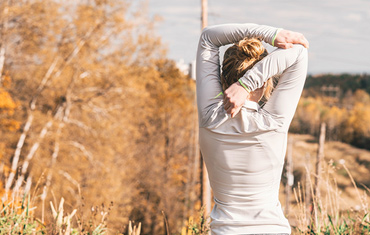From basketball players to swimmers, there’s one pre-and-post-workout activity that every athlete has in common: stretching. For many experts, this form of exercise is considered a critical component of any intensive physical regimen. But why is stretching so important? And, how exactly does it work?
Let’s explore the importance of stretching, and the benefits athletes can expect from stretching regularly.
The Science Behind Stretching

The human body has over 600 muscles, each containing stretch receptors that are attached to muscle fibers. During stretching, some of these fibers lengthen while others remain at rest.
Unsurprisingly, stretching is considered to be a natural and intuitive behavior exhibited among most animal species.
The chances are high that there’ve been times when you’ve automatically stretched upon waking up from a night of slumber. This phenomenon is known as pandiculation, and it’s when involuntary stretching of the soft tissues occurs. Stretching as a form of exercise is slightly different from pandiculation and involves deliberately flexing (or stretching) a specific muscle to improve elasticity and muscle control.
The Benefits of Stretching
While stretching is known to improve posture and offer stress release, the following are the most critical health benefits of stretching that athletes should be aware of:
Flexibility
As mentioned above, each muscle contains stretch receptors. Stretch receptors send messages to the nerves that control muscle contractions. Regular stretching can train these stretch receptors to allow greater lengthening of muscles, causing increased flexibility in the process. Increased flexibility is vital for athletic performance as it can result in increased strength and easier movement.
Blood Flow
In addition to improving flexibility, stretching can also improve blood flow. A 2020 study published by The Journal Of Physiology, found that simple leg stretches can help improve the body’s blood flow. It’s believed that stretching makes the body release chemicals that expand the arteries, allowing for more blood to enter. The benefits of improved blood flow include shorter recovery times and reduced muscle soreness—an invaluable benefit for athletes constantly looking to achieve peak performance.
How to Stretch (The Right Way)
Depending on the sport you participate in and your individual physical health, the type of stretching recommended may vary. Still, there are a few standard best practices to remember, particularly as it relates to a stretch’s duration. According to the American College of Sports Medicine, each stretching exercise should last a total of 60 seconds for optimal results. This time frame can include repetitions of the same stretch (i.e., three sets of hamstring stretches at 20 seconds each). Additionally, it’s important to make sure you are properly warmed up before stretching with a low-intensity activity such as walking.
Speak With an Expert About Your Stretching Regimen
While stretching is a great way to improve wellness and athletic performance, consulting with an expert is one of the most important ways you can prevent injuries. At OrthoIllinois, Dr. Van Thiel uses the most advanced techniques to diagnose and treat injuries common among athletes, such as ACL tears.
To schedule your visit at our Rockford office, use our online form or give us a call at .





